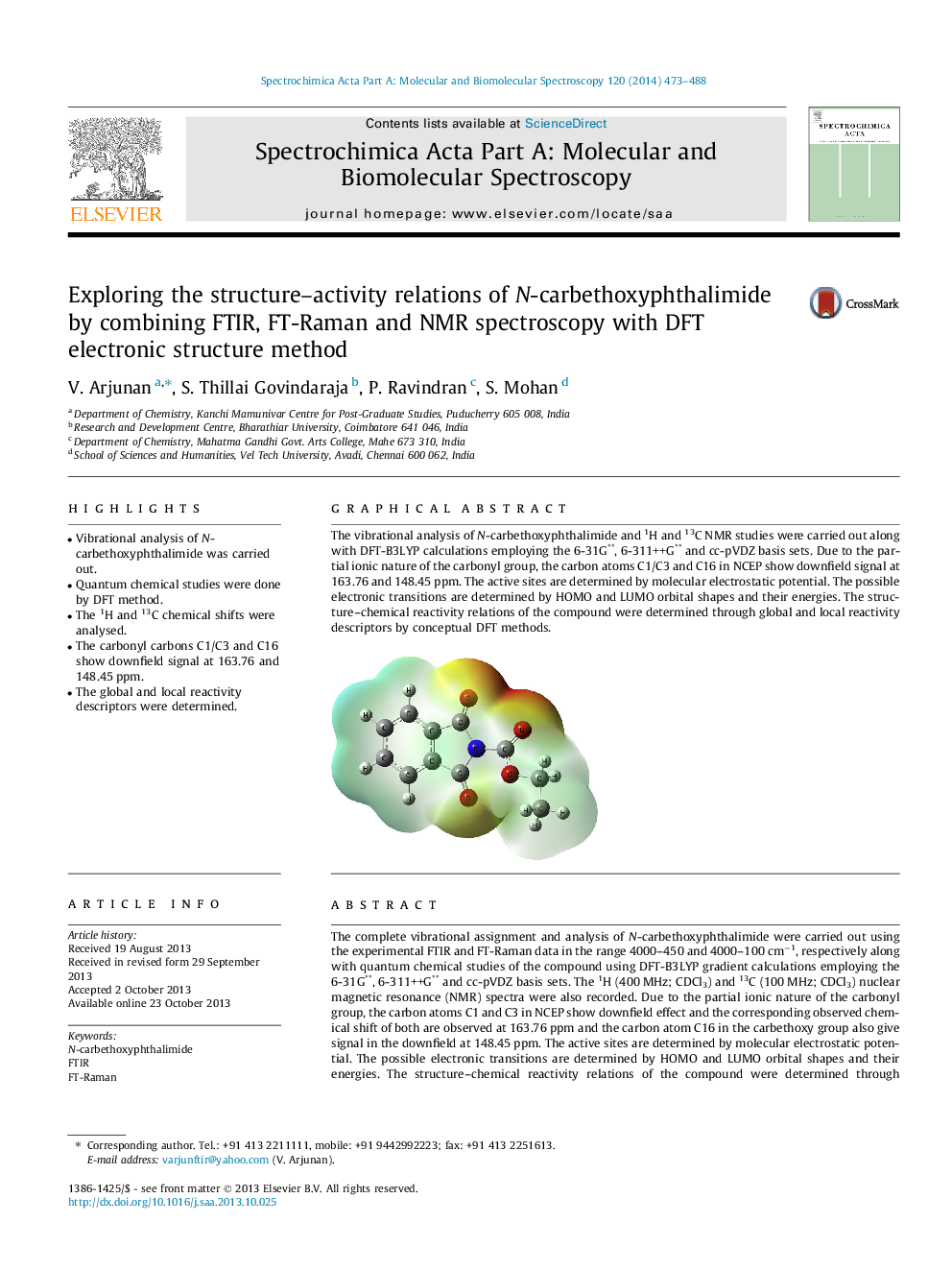| Article ID | Journal | Published Year | Pages | File Type |
|---|---|---|---|---|
| 1230875 | Spectrochimica Acta Part A: Molecular and Biomolecular Spectroscopy | 2014 | 16 Pages |
•Vibrational analysis of N-carbethoxyphthalimide was carried out.•Quantum chemical studies were done by DFT method.•The 1H and 13C chemical shifts were analysed.•The carbonyl carbons C1/C3 and C16 show downfield signal at 163.76 and 148.45 ppm.•The global and local reactivity descriptors were determined.
The complete vibrational assignment and analysis of N-carbethoxyphthalimide were carried out using the experimental FTIR and FT-Raman data in the range 4000–450 and 4000–100 cm−1, respectively along with quantum chemical studies of the compound using DFT-B3LYP gradient calculations employing the 6-31G**, 6-311++G** and cc-pVDZ basis sets. The 1H (400 MHz; CDCl3) and 13C (100 MHz; CDCl3) nuclear magnetic resonance (NMR) spectra were also recorded. Due to the partial ionic nature of the carbonyl group, the carbon atoms C1 and C3 in NCEP show downfield effect and the corresponding observed chemical shift of both are observed at 163.76 ppm and the carbon atom C16 in the carbethoxy group also give signal in the downfield at 148.45 ppm. The active sites are determined by molecular electrostatic potential. The possible electronic transitions are determined by HOMO and LUMO orbital shapes and their energies. The structure–chemical reactivity relations of the compound were determined through chemical potential, global hardness, global softness, electronegativity, electrophilicity and local reactivity descriptors by conceptual DFT methods.
Graphical abstractThe vibrational analysis of N-carbethoxyphthalimide and 1H and 13C NMR studies were carried out along with DFT-B3LYP calculations employing the 6-31G**, 6-311++G** and cc-pVDZ basis sets. Due to the partial ionic nature of the carbonyl group, the carbon atoms C1/C3 and C16 in NCEP show downfield signal at 163.76 and 148.45 ppm. The active sites are determined by molecular electrostatic potential. The possible electronic transitions are determined by HOMO and LUMO orbital shapes and their energies. The structure–chemical reactivity relations of the compound were determined through global and local reactivity descriptors by conceptual DFT methods.Figure optionsDownload full-size imageDownload as PowerPoint slide
